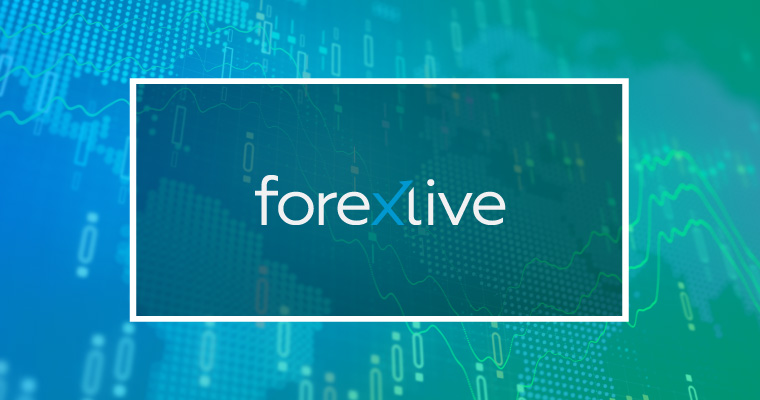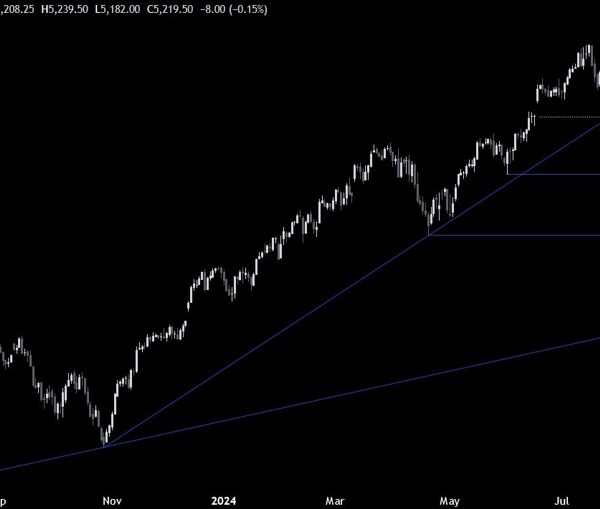da-kuk
Dear India Fund Shareholder:
Baron India Fund® (BINDX, the Fund) gained 6.33% (Institutional Shares) during the third quarter of 2024, while its relevant benchmark index, the MSCI AC Asia ex Japan/India Linked Index (the Linked Benchmark), was up 3.96%. As of market close on August 30, Baron New Asia Fund was converted into Baron India Fund, necessitating a Linked Benchmark to represent the comparable market performance for the quarter, and to allow the predecessor track record to attach to the new Fund. In essence, our reported performance represents the return of Baron New Asia Fund for July and August and that of the reconstituted Baron India Fund for September. As noted, the Fund outperformed the Linked Benchmark during a solid quarter for global equity returns.
While the seminal event during the third quarter was the U.S. Federal Reserve’s (the Fed) 50 basis point rate cut, marking the beginning of a long- awaited easing cycle, we would argue that the nearly simultaneous emergence of two additional catalysts have markedly increased the likelihood that we have now entered a sustainable and mean-reverting outperformance phase for developing world and Indian equities. The first was Japan’s exit from zero interest rate policy, signaling interest rate and monetary policy normalization and a bottom to the 13-year bear market in the Japanese yen, which we believe will likely provoke a longer-term inflection point in global capital flows away from over-owned U.S. assets and in the direction of non-U.S. bonds and equities. Second was the comprehensive and unexpected pivot in monetary and fiscal stimulus intensity announced in late September by Chinese authorities, finally projecting a sense of urgency and commitment regarding economic recovery and property market stabilization, while clearly prioritizing the execution of pro-growth policy initiatives. In response to the above, developing world equities markedly outperformed the S&P 500 Index (SP500, SPX) during the third quarter, while the MSCI India Index has returned an impressive 18.03% since the mid-April peak in inflation expectations, outperforming the S&P 500 Index by 3.47% over this period. Although trading at healthy valuations, we remain optimistic that notwithstanding the recent rally, Indian equities offer an attractive long-term entry point given the unique growth potential of the Indian economy and the leading role played by private sector entrepreneurs, the volume of productivity enhancing reforms, and India’s position in our view as the largest beneficiary of the evolving geopolitical landscape. We believe these factors will support many years of strong earnings growth for well-managed businesses in India, many of which we have invested in.
| Baron IndiaFund RetailShares1,2 | Baron IndiaFund InstitutionalShares1,2 | MSCI AC Asia exJapan/IndiaLinked Index1 | MSCI ACAsia exJapan Index1 | MSCI IndiaIndex1 | MSCI EmergingMarkets Index1 | |
|---|---|---|---|---|---|---|
| Three Months3 | 6.21% | 6.33% | 3.96% | 10.40% | 7.29% | 8.72% |
| Nine Months3 | 25.12% | 25.27% | 14.10% | 21.16% | 25.41% | 16.86% |
| One Year | 32.59% | 32.88% | 21.43% | 28.95% | 40.33% | 26.05% |
| Three Years | (1.96)% | (1.71)% | (1.37)% | 0.62% | 11.64% | 0.40% |
| Since Inception (July 30, 2021) | (0.73)% | (0.49)% | (1.92)% | (0.05)% | 14.92% | (0.08)% |
|
Performance listed in the above table is net of annual operating expenses. Annual estimated expense ratios for the Retail Shares and Institutional Shares was 7.26% and 6.79%, respectively, but the net annual expense ratio was 1.45% and 1.20% (net of the Adviser’s fee waivers and expense reimbursements), respectively. The performance data quoted represents past performance. Past performance is no guarantee of future results. The investment return and principal value of an investment will fluctuate; an investor’s shares, when redeemed, may be worth more or less than their original cost. The Adviser waives and/or reimburses certain Fund expenses pursuant to a contract expiring on August 29, 2035, unless renewed for another 11-year term and the Fund’s transfer agency expenses may be reduced by expense offsets from an unaffiliated transfer agent, without which performance would have been lower. Current performance may be lower or higher than the performance data quoted. For performance information current to the most recent month end, visit BaronCapitalGroup.com or call 1-800-99-BARON. (1)The MSCI AC Asia ex Japan/India Linked Index Net (‘USD’) was created by the Adviser and links the performance of the MSCI AC Asia ex Japan Index for all periods prior to September 1st, 2024 and the MSCI India Index for all periods thereafter. The MSCI AC Asia ex Japan Index Net (‘USD’) measures the performance of large and mid cap equity securities representation across 2 of 3 developed markets countries (excluding Japan) and 8 emerging markets countries in Asia. The MSCI India Index Net (‘USD’) is a broad-based securities index that is designed to measure the performance of the large and mid-cap segments of the Indian market. The MSCI Emerging Markets Index Net (‘USD’) is designed to measure equity market performance of large and mid-cap securities across 24 Emerging Markets countries. MSCI is the source and owner of the trademarks, service marks and copyrights related to the MSCI Indexes. The indexes and the Fund include reinvestment of dividends, net of foreign withholding taxes, which positively impact the performance results. The indexes are unmanaged. Index performance is not Fund performance. Investors cannot invest directly in an index.(2)The performance data does not reflect the deduction of taxes that a shareholder would pay on Fund distributions or redemption of Fund shares.(3)Not annualized. |
Due to the conversion of Baron New Asia Fund into Baron India Fund during the third quarter, and the coincident transition in the benchmark index, we will not provide third quarter 2024 performance attribution. We will resume attribution commentary in the upcoming fourth quarter 2024 letter, which will reflect the first full quarter of Baron India Fund.
Top Contributors to Performance
| Contribution to Return% | |
|---|---|
| Trent Limited | 1.77 |
| Bharti Airtel Limited | 1.55 |
| GMR Power and Urban Infra Limited | 1.22 |
| Zomato Limited | 1.20 |
| Kaynes Technology India Limited | 0.98 |
Trent Limited is a leading retailer in India that sells direct-to-consumer private label apparel through its proprietary retail network. Shares were up on better-than-expected quarterly sales performance as well as the continued expansion of its Zudio value fashion franchise. We believe the company will generate over 25% revenue growth in the near-to-medium term, driven by same-store-sales growth and outlet expansion. In addition, we believe improved operating leverage and a growing franchisee mix will lead to increased profitability and return on capital, driving an EBITDA CAGR of more than 30% over the next three to five years.
Shares of Bharti Airtel Limited contributed during the quarter driven by steady earnings performance and visibility into strong future free cash flow generation as the company is likely at its peak capex intensity. As India’s dominant mobile operator, the company is benefiting from ongoing industry consolidation. In particular, Vodafone Idea, a key player and competitor, is on the verge of bankruptcy amid severe pricing pressure and an unsustainable balance sheet. We retain conviction as Bharti Airtel transforms into a digital services company and benefits from rising mobile tariffs.
GMR Power and Urban Infra Limited is an Indian company that specializes in power generation, railway and road construction, and urban development. Shares were up this quarter on improving profitability. Longer term, GMR is well positioned to participate in India’s power upcycle, where renewable energy capacity is expected to grow at a 15% to 20% compounded rate. We think the company will strengthen its balance sheet by monetizing stranded power and land assets, recovering receivables from state-owned power distribution companies, and continually reducing corporate debt. We expect GMR to deliver low double-digit EBITDA growth over the next three to five years, with additional upside from improving balance sheet health.
Top Detractors from Performance
| Contribution to Return% | |
|---|---|
| Reliance Industries Limited | –0.37 |
| SK hynix Inc. (OTCPK:HXSCF) | –0.30 |
| PDD Holdings Inc. (PDD) | –0.30 |
| Kanzhun Limited (BZ) | –0.21 |
| Samsung Electronics Co., Ltd. (OTCPK:SSNLF) | –0.21 |
Reliance Industries Limited is India’s leading conglomerate, with businesses that encompass petrochemicals, refining, and oil-and gas-related operations as well as retail, telecommunications, and media. Shares were down during the quarter due to soft performance in the retail business. Longer term, Reliance is well positioned to leverage its telecommunications network to transform into a digital services company, offering products such as video streaming, broadband, and e-commerce services. The company is also laying the groundwork to create an online marketplace that will connect over 12 million mom & pop retailers to over 400 million mobile and internet subscribers. We believe earnings will sustain high double-digit growth over the next three to five years.
After a strong start to the year, shares of SK hynix Inc., a South Korean memory semiconductor company, partially retraced gains due to concerns about a potential decline in DRAM and NAND prices. Despite short-term cyclical pressure, we believe the memory industry is on the cusp of a multi- year growth phase, enjoying structural demand growth as servers, smartphones, PCs, and other devices become ever more computationally intensive. We also believe SK hynix will remain a key beneficiary of surging AI-driven demand for high-bandwidth memory (HBM), which uses advanced packaging to vertically stack DRAM chips, resulting in higher bandwidth and improved power efficiency. We expect the company to remain the industry leader in cutting-edge HBM and generate robust earnings growth over the next several years.
PDD Holdings Inc. operates China’s second-largest e-commerce platform and the growing cross-border shopping platform Temu. Shares experienced a notable decline after management’s remarks during a recent earnings call. While PDD’s second quarter results showed a slight revenue miss, profitability remained solid, and the company continued to outperform its peers. However, the market was taken aback by the unconventional tone of the call, where management expressed a surprisingly bearish outlook on future profitability, proposed strategies that appeared misaligned with broader industry trends, and reiterated their decision to withhold shareholder returns despite a strong net cash position and Temu’s improving financials. These developments raised concerns about a potential misalignment between management and shareholder interests, prompting us to reduce our position due to increased corporate governance risks.
Portfolio Structure
| Contribution to Return% | |
|---|---|
| Bharti Airtel Limited | 8.6 |
| Trent Limited | 7.4 |
| Reliance Industries Limited | 5.9 |
| Indus Towers Limited | 4.9 |
| HDFC Bank Limited (HDB) | 4.8 |
| ICICI Bank Limited (IBN) | 4.7 |
| Tata Consultancy Services Limited | 4.3 |
| Zomato Limited | 3.8 |
| JM Financial Limited | 3.4 |
| Kaynes Technology India Limited | 2.9 |
| Percent of Net Assets(%) | |
|---|---|
| Financials | 25.6 |
| Communication Services | 16.7 |
| Consumer Discretionary | 15.3 |
| Industrials | 9.5 |
| Information Technology | 7.2 |
| Energy | 5.9 |
| Consumer Staples | 5.4 |
| Health Care | 4.2 |
| Materials | 3.4 |
| Utilities | 2.3 |
| Real Estate | 1.2 |
| Cash and Cash Equivalents | 3.2 |
| Total | 100.0* |
|
* Individual weights may not sum to the displayed total due to rounding.
|
Exposure by Market Cap: The Fund may invest in companies of any market capitalization, and we have generally been broadly diversified across large-, mid-, and small-cap companies, as we believe developing companies of all sizes in Asia can exhibit attractive growth potential. At the end of the third quarter of 2024, the Fund’s median market cap was $12.6 billion, and we were invested 52.8% in giant-cap companies, 25.5% in large-cap companies, 13.3% in mid-cap companies, and 5.2% in small-and micro-cap companies, as defined by Morningstar, with the remainder in cash.
Recent Activity
During the third quarter, upon the successful conversion of the Fund into an India dedicated strategy (effective September 1, 2024), we divested all our non-India holdings and reallocated capital across various India-related themes. Since the current quarter is a period of transition from Baron New Asia Fund into Baron India Fund, we expect to recategorize some of our investments into new themes that better represent our India focus going forward. We will provide more details in our next letter upon completing a full quarter as Baron India Fund.
As part of our India consumer finance/wealth management theme, we initiated a position in ICICI Bank Limited, the second largest private sector bank in India. Through its vast distribution network of nearly 6,000 branches, the company offers a complete suite of banking products to commercial and retail clients. ICICI is conservatively managed with a solid balance sheet, including a growing proportion of low cost deposits, stable asset quality, and high capital ratios. The bank has invested heavily in modernizing its technology infrastructure and is at the forefront of developing digital solutions for its clients, which we deem as a competitive advantage. In recent years, management has sought to expand the retail banking business, which has brought higher risk-adjusted returns for the bank and enabled it to close the profitability gap compared to other leading private sector banks, delivering ROEs in the high teens. We believe ICICI is well positioned to benefit from structural growth opportunities in India’s financial services industry owing to its solid balance sheet, strong brand name, and superior digital offering. We expect the company to deliver mid-to-high teens earnings growth over the next three to five years while maintaining high- teens ROEs and robust asset quality.
We were also active in adding to our global security/supply-chain diversification theme, by initiating positions in DCW Limited and Siemens Limited. DCW is a leading Indian manufacturer of polyvinyl chloride, caustic soda, and related specialty chemicals. The company serves various end markets, including construction, chemicals, health care, and the manufacturing of glass, detergents, and dyes. Historically positioned as a commodity chemicals player, DCW has successfully pivoted into producing high-margin specialty chemicals, including chlorinated polyvinyl chloride (C-PVC), synthetic iron oxide pigment, and synthetic rutile, all of which are typically imported into India. Recently, India extended its anti-dumping duties on C-PVC imports from China and South Korea. In our view, DCW is a key beneficiary of such government policies that incentivize domestic manufacturing and push import substitution across various industries. We are encouraged by the company’s commitment to further invest in production capacity for its specialty chemicals business, earning attractive margins and return on capital metrics. We expect the specialty product mix to increase from the current 20% of sales to over 50% over the next five years, which will likely serve as a re-rating catalyst for the stock. In our view, DCW is well positioned to deliver over 30% compounded earnings growth over the next two to three years.
Siemens, a subsidiary of parent Siemens AG (OTCPK:SIEGY), is India’s leading engineering and technology conglomerate. The company manufactures steam turbines, switchgear, motors, generators, transformers, and smart grid systems. It serves clients across various industries, including smart infrastructure, mobility, automation, and power transmission and distribution. Siemens is a key beneficiary of accelerating infrastructure spend by the Indian government and private sector. With about 30% revenue exposure to power transmission, we believe the company is particularly well positioned to benefit from India’s energy upcycle, driving orders wins and operating leverage. We expect Siemens to deliver 15% to 20% compounded earnings growth over the next three to five years. Additionally, the company is in the process of demerging its power division, which is expected to become the largest pure-play power transmission equipment company in India. In our view, this event will further unlock shareholder value.
During the quarter, we also increased exposure to our Asia consumer theme, by initiating an investment in Avenue Supermarts Limited, a leading food and grocery retailer in India. The company currently operates 371 stores across 12 states under its flagship “DMart” brand. In our view, DMart’s competitive moat lies in its ability to offer the best value for money to customers, due to its vast scale and strong negotiating leverage with suppliers. Excess profitability is typically returned to customers via lower prices which supports higher footfalls and operating leverage, thereby strengthening its value proposition. The company also owns its real estate, leading to lower operational costs and higher profitability along with a stronger balance sheet versus peers. The grocery retail industry in India is currently dominated by unorganized players, while branded grocery chains like DMart account for only 15% of the market. We believe the company is well positioned to benefit from accelerating industry consolidation as customer preferences gravitate toward organized retailers offering good value at affordable prices. We are also excited about DMart’s store expansion plans as it deepens its network in existing cities while also launching into newer territories. We expect the company to deliver high teens compounded earnings growth over the next three to five years.
As we transitioned the Fund to an India dedicated strategy, we added to several of our existing India positions during the quarter, including Tata Consultancy Services Limited, HDFC Bank Limited, Reliance Industries Limited, JM Financial Limited, Aster DM Healthcare Limited, Cholamandalam Investment and Finance Company Limited, Bharti Airtel Limited, Tata Communications Limited, and Bajaj Finance Limited.
During the quarter, apart from exiting our non-India holdings, we also divested our position in Amber Enterprises India Limited, as we continue our endeavor to allocate capital to our highest convictions ideas.
Outlook
For nearly a year, we have highlighted that in our opinion, the Fed’s monetary policy was holding hostage the emerging market and international economies where inflation had already been tamed, and by extension, where real interest rates were already too restrictive. In recent years, the U.S. became the epicenter of the inflation challenge, in our view by virtue of the much greater monetary and fiscal shock therapy administered by U.S. policymakers in the aftermath of the COVID pandemic. Unfortunately for such foreign jurisdictions, Fed tightening is a global, one-size-fits-all prescription. We have anticipated for some time that a mean-reverting Asia/ India outperformance cycle was due, but that greater certainty regarding Fed easing and/or perhaps rate-normalization in Japan or a more forceful China stimulus would be the necessary catalysts to set such a cycle in motion. As anticipated in our previous letter, where we suggested that moderating U.S. economic and inflation trends would warrant Fed rate cuts sooner than later, we can finally say we have reached the elusive inflection point. As evidence, during the third quarter, the Fed cut its policy rate by a greater than expected 50 basis points, and the MSCI AC Asia ex Japan Index rose 10.40% versus 5.89% for the S&P 500 Index, while the MSCI India Index gained 7.29%. Further, since the year-to-date peak in U.S. inflation expectations in mid-April, Asia ex-Japan and Indian equities have returned an impressive 19.74% and 18.03%, respectively, markedly outperforming the S&P 500 Index’s 14.56% return. With all three of the aforementioned catalysts now kicking in, we believe it is increasingly likely that a sustainable developing Asia/India relative outperformance cycle has begun.
It appears that early in the quarter the Japanese yen finally bottomed after a 13-year bear market and a decline of over 50% versus the U.S. dollar. This bottom is confirmed in our view by the Bank of Japan’s recent move to exit zero interest rate policy while further increasing its short-term policy rate by greater-than-market expectations. This signaling of monetary policy and interest rate normalization took markets by surprise, and triggered an abrupt “Japan carry-trade unwind,” which sent shock waves throughout global capital markets beginning in July and continuing into August. In our view, this event has longer-lasting implications as Japanese institutions and retail investors will likely embark on a longer-term repatriation of assets back to the appreciating home currency, while global hedge funds, speculators, and investors are also likely to deleverage and reposition, which in our view collectively will favor previously underperforming assets such as EM and Asia at the expense of the more over-owned Magnificent Seven and U.S. equities in general. For reference, it is estimated that Japanese institutions and retail investors hold over $5 trillion in total foreign securities, with an estimated $1.1 trillion in U.S. treasuries as well as a large exposure to U.S. equities. Foreigners in aggregate own over $10 trillion, or roughly 18% of the $55 trillion market cap of U.S. equities, and up from $3.1 trillion when the yen last peaked in 2011. If, as we suspect, Japan repatriation has begun in earnest, this could likely trigger a broader tipping point in foreign ownership of U.S. equities, reversing a key trend that has been in place for over a decade.
Further supporting the outlook for Asian (and global) equities, late in the quarter China’s policymakers also surprised markets with several fresh initiatives. First, on September 24, the People’s Bank of China announced a significant step-up in economic support via a cut to the bank reserve requirement ratio and a simultaneous policy rate cut of 20 basis points (double the typical amount), with a rare public statement that more easing is to come. Additionally, for the first time ever, the PBOC set up a mechanism to directly support the equity markets including funding/lending for corporate buybacks – in effect, “stimulus with benefits” and enhanced governance for equity investors. Simultaneously, the Chinese banking regulator announced plans to recapitalize large state banks, addressing any capital/credit concerns and positioning the state banks to increase lending while also supporting property sector stabilization. Only two days later, the Politburo (the top leadership of the Communist Party) concluded a rare “surprise economic meeting,” essentially projecting a sense of urgency, with official commentary confirming that economic recovery and the execution of pro-growth policy initiatives are now of the highest priority. The Politburo for the first time explicitly pledged to arrest the decline and foster stabilization of property prices while outlining several tools at their disposal to do so. In addition, and perhaps the most critical to many investors’ assessment of the credibility of the communique, the Politburo mentioned consumption, confidence and the welfare of Chinese households – alluding to forthcoming fiscal stimulus while also contrasting the exclusive supply- side emphasis of prior initiatives. Without question, this represents a new level of commitment on behalf of China’s leadership, which in our view is more likely than not to improve consumer and business confidence while also enhancing forward-looking corporate earnings estimates. We have consistently communicated that while the long-term fundamental and the geopolitical environment vis-a-vis China has deteriorated, in our view such challenges were well-discounted in equity prices, resulting in more upside potential than downside. Further, lack of traction on previously announced policy measures in our view raised the odds of triggering an “all-in” stimulus signal, which we believed at the time could drive 30% to 50% gains across many of our holdings if viewed as credible. As most China-related indices rallied roughly 20% in the final week of September, with private sector and growth-oriented individual equities up significantly more, we are heartened but also carefully monitoring valuations, as we suspect we have now traveled some portion of the way towards our assessment of fair value. While India, Taiwan and China ended the third quarter leading all major EM/ Asian jurisdictions, up more than 25% year-to-date and outperforming the S&P 500 over this period, we continue to believe that over the long-term, India offers the most attractive and broadest set of investment opportunities consistent with the Baron approach.
A word on the upcoming U.S. election. The U.S. election appears an almost dead heat at the writing of this letter, meaning investors cannot reasonably predict the outcome. While many have voiced concerns regarding election- related risks to non-U.S. equities, we have cautioned that many of these concerns have been known for some time and that after a multi-year, relative bear market, a lot is already discounted in the price. Further, while the likelihood and viability of a second Trump administration’s tariff policy is difficult to predict, we submit that a Harris administration would nearly certainly be dollar bearish, while Trump has explicitly called for a weaker dollar and an easier Fed should he prevail. In our view, the U.S. dollar remains perhaps the critical variable in assessing the outlook for non-U.S. equity relative performance, and we reiterate that we believe a dollar bear market is likely already underway (good for non-U.S. performance). As such, while we certainly anticipate bouts of volatility heading into the election and its aftermath, we do not currently believe the outcome of this election should have a material or lasting effect on the intermediate or longer-term outlook for Asia/India-related equities.
Thank you for investing in the Baron India Fund.
Sincerely,
Anuj Aggarwal, Portfolio Manager | Michael Kass, Portfolio Manager Adviser
|
The performance data quoted represents past performance. Past performance is no guarantee of future results. The investment return and principal value of an investment will fluctuate; an investor’s shares, when redeemed, may be worth more or less than their original cost. The Adviser waives and/or reimburses or may waive or reimburse certain Funds expenses pursuant to a contract expiring on August 29, 2035, unless renewed for another 11-year term and the Funds’ transfer agency expenses may be reduced by expense offsets from an unaffiliated transfer agent, without which performance would have been lower. Current performance may be lower or higher than the performance data quoted. For performance information current to the most recent month end, visit BaronCapitalGroup.com or call 1-800-99-BARON. Investors should consider the investment objectives, risks, and charges and expenses of the investment carefully before investing. The prospectus and summary prospectuses contain this and other information about the Funds. You may obtain them from the Funds’ distributor, Baron Capital, Inc., by calling 1-800-99-BARON or visiting BaronCapitalGroup.com. Please read them carefully before investing. Risks: All investments are subject to risk and may lose value. Investors should consider the investment objectives, risks, and charges and expenses of the investment carefully before investing. The prospectus and summary prospectus contain this and other information about the Funds. You may obtain them from the Funds’ distributor, Baron Capital, Inc., by calling 1-800-99-BARON or visiting BaronCapitalGroup.com. Please read them carefully before investing. As stated within the Supplement to the Prospectus and Statement of Additional Information dated April 26, 2024, effective September 1, 2024, Baron New Asia Fund® has changed its name to Baron India Fund®. For additional information please refer to the Supplement. Risks: Non-U.S. investments may involve additional risks to those inherent in U.S. investments, including exchange-rate fluctuations, political or economic instability, the imposition of exchange controls, expropriation, limited disclosure and illiquid markets. In addition, investments in developing countries may have increased risks due to a greater possibility of settlement delays; currency and capital controls; interest rate sensitivity; corruption and crime; exchange rate volatility; and inflation or deflation. Government actions, bureaucratic obstacles and inconsistent economic reform within the Indian government have had a significant effect on the Indian economy and could adversely affect market conditions, economic growth and the profitability of private enterprises in India. The Fund may not achieve its objectives. Portfolio holdings are subject to change. Current and future portfolio holdings are subject to risk. The discussions of the companies herein are not intended as advice to any person regarding the advisability of investing in any particular security. The views expressed in this report reflect those of the respective portfolio manager only through the end of the period stated in this report. The portfolio manager’s views are not intended as recommendations or investment advice to any person reading this report and are subject to change at any time based on market and other conditions and Baron has no obligation to update them. This report does not constitute an offer to sell or a solicitation of any offer to buy securities of Baron New Asia Fund by anyone in any jurisdiction where it would be unlawful under the laws of that jurisdiction to make such offer or solicitation. BAMCO, Inc. is an investment adviser registered with the U.S. Securities and Exchange Commission (SEC). Baron Capital, Inc. is a broker-dealer registered with the SEC and member of the Financial Industry Regulatory Authority, Inc. (FINRA). |
Editor’s Note: The summary bullets for this article were chosen by Seeking Alpha editors.
Editor’s Note: This article discusses one or more securities that do not trade on a major U.S. exchange. Please be aware of the risks associated with these stocks.















